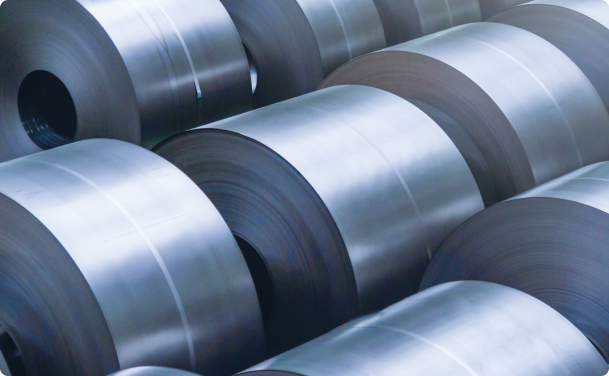

In the world of engineering and industrial applications, stainless steel grades play a pivotal role, offering unique mechanical properties and resistance to corrosion. Among these grades, S165M stainless steel—also known as 1.4418, X4CrNiMo16-5-1, SS2387, and Z6CND16-05-01—stands out for its impressive blend of strength, durability, and corrosion resistance. Used extensively in sectors such as marine, oil and gas, chemical processing, and even high-stress automotive components, S165M has proven itself to be a critical material for demanding environments.
The Unique Composition of S165M Stainless Steel
What makes S165M stainless steel distinctive is its balanced composition of elements that enhance its physical and chemical properties. S165M is classified as a martensitic stainless steel, a type known for its higher carbon content and resulting mechanical strength. Key components of S165M include chromium, nickel, and molybdenum, each of which brings specific qualities to the steel.
- Chromium (Cr): With a chromium content of approximately 16%, S165M benefits from excellent corrosion resistance. Chromium reacts with oxygen in the environment, forming a thin, passive layer on the surface that resists further oxidation. This makes 1.4418 suitable for high-humidity or saline environments where corrosion is a significant concern.
- Nickel (Ni): Nickel, at about 5%, enhances the material’s toughness and helps stabilize its structure at low temperatures. This is why X4CrNiMo16-5-1 can be used in cryogenic applications where many other stainless steels would become brittle.
- Molybdenum (Mo): Molybdenum adds strength and improves the pitting resistance of SS2387, especially when exposed to chlorides. This element makes S165M an excellent choice for applications in environments like seawater, which is corrosive to standard stainless steels.
Mechanical Properties: Strength and Toughness Redefined
One of the most valuable attributes of S165M stainless steel is its strength-to-weight ratio. S165M is often tempered and hardened, resulting in high tensile strength and impressive hardness without compromising flexibility or ductility. These properties make it an ideal choice for parts subjected to heavy mechanical stress, such as shafts, valves, and turbine blades.
The mechanical performance of X4CrNiMo16-5-1 is enhanced by heat treatment processes, which adjust the steel’s grain structure, making it resilient under significant force. Additionally, 1.4418 demonstrates excellent fatigue resistance, meaning it can withstand cyclic loading—repeated applications of stress—without failing. This characteristic is particularly valued in high-performance industries where machinery and parts are in constant motion.
Corrosion Resistance: A Key Advantage
The corrosion resistance of Z6CND16-05-01 is one of its defining features, essential for environments where exposure to corrosive elements is unavoidable. S165M is well-suited for saline conditions, as the molybdenum and chromium elements create a robust barrier against pitting corrosion. This is a significant advantage for marine applications, where materials are continually exposed to saltwater, a notoriously corrosive environment.
Furthermore, SS2387 provides resistance to stress corrosion cracking (SCC), a type of failure caused by the combination of tensile stress and a corrosive environment. SCC is a critical concern in industries where structural integrity is paramount. S165M’s composition minimizes this risk, extending the longevity of components and reducing maintenance costs.
Applications of S165M Stainless Steel in Industry
The versatility and robustness of S165M stainless steel mean that it can be found across numerous industries. Here’s a closer look at some of its primary applications:
- Marine Industry: Components exposed to saltwater, such as propeller shafts, rudders, and fasteners, benefit from the corrosion resistance and strength of S165M. The molybdenum in X4CrNiMo16-5-1 helps prevent pitting, a common issue in seawater applications.
- Oil and Gas: In environments where harsh chemicals and high pressures are the norm, SS2387 is a preferred material for valves, pumps, and offshore drilling components. Its resistance to stress corrosion cracking means it can withstand high-stress conditions typical of deep-sea drilling and extraction.
- Chemical Processing: Industrial processes involving acids, alkalis, and other corrosive agents require materials that can endure without deteriorating. Z6CND16-05-01 is commonly used in reactors, pipelines, and heat exchangers for its reliability and resilience under these conditions.
- Aerospace and Automotive: The aerospace and automotive industries demand materials that can handle high-stress conditions while remaining lightweight. 1.4418 stainless steel fits this requirement perfectly, being used in critical components like gears, shafts, and fasteners where strength is essential, and weight minimization is advantageous.
Heat Treatment: Enhancing S165M’s Properties
The properties of S165M stainless steel can be further refined through specific heat treatments, which adjust its hardness, ductility, and corrosion resistance. Annealing, quenching, and tempering are standard treatments applied to 1.4418 to bring out the best characteristics for particular applications. By carefully controlling the heating and cooling rates, manufacturers can tailor SS2387 for applications that require either increased toughness or enhanced hardness.
Why S165M Stainless Steel?
What sets S165M apart from other stainless steels is its unique balance of strength, ductility, and corrosion resistance. While standard stainless steels may perform well in less demanding applications, X4CrNiMo16-5-1 shines in challenging environments. Its martensitic structure provides robust mechanical properties that are invaluable for industries facing harsh conditions daily.
For engineers and designers, S165M stainless steel is often the material of choice when durability, strength, and corrosion resistance are non-negotiable. The combination of these properties with the ability to handle high mechanical loads and corrosive environments means that S165M can be trusted for performance and longevity, even under extreme conditions.
In sum, S165M stainless steel—also known as 1.4418, X4CrNiMo16-5-1, SS2387, and Z6CND16-05-01—is a critical material that continues to shape modern industries. Its balanced composition, coupled with its ability to undergo specialized treatments, ensures it remains a top choice for applications where resilience and reliability are paramount. Whether in the depths of the ocean or the demands of high-speed machinery, S165M rises to meet the challenge.

